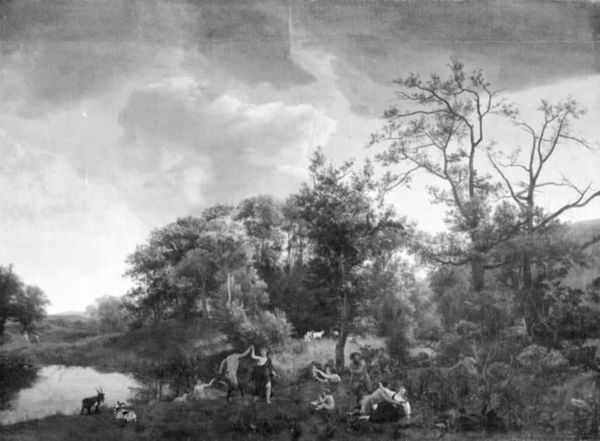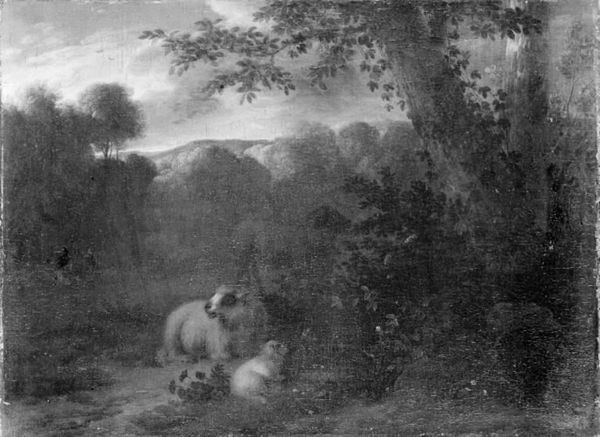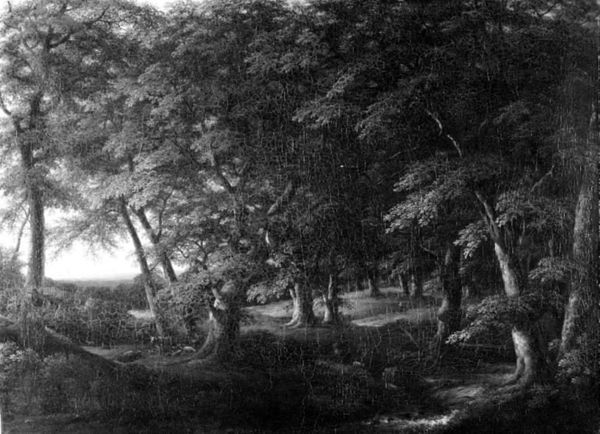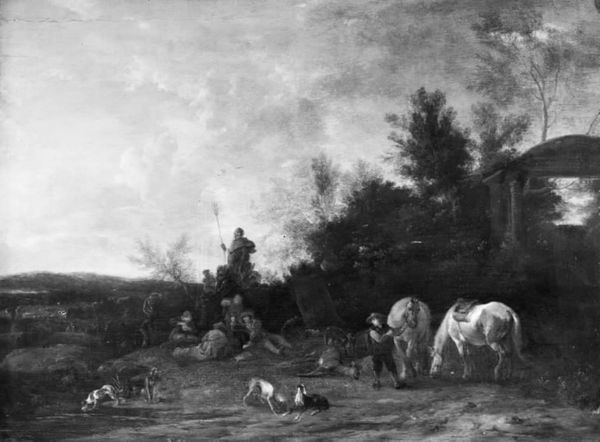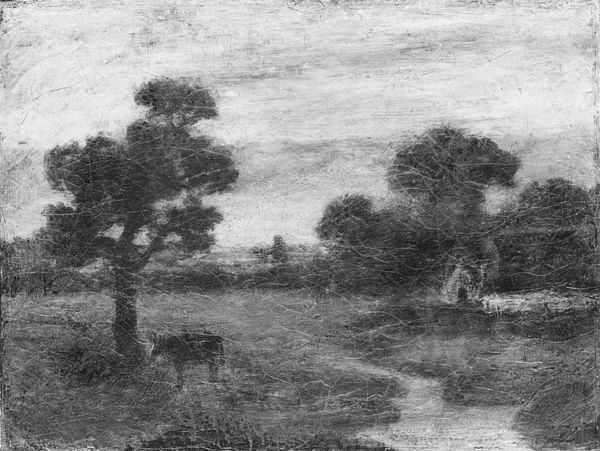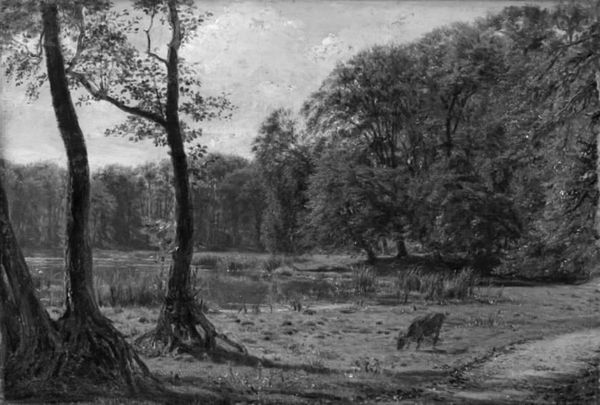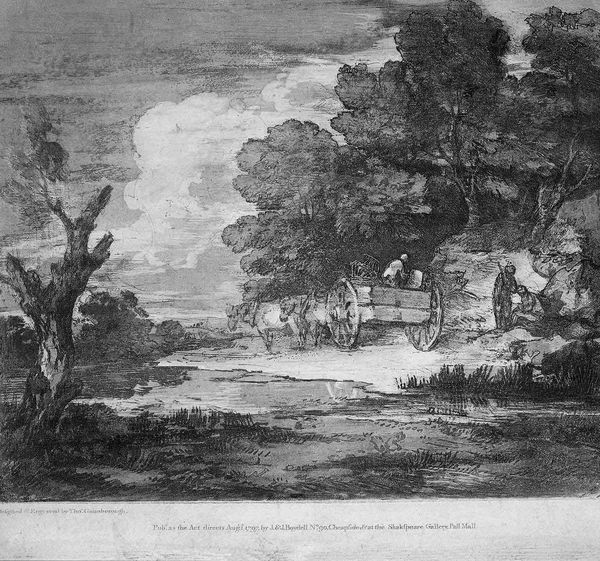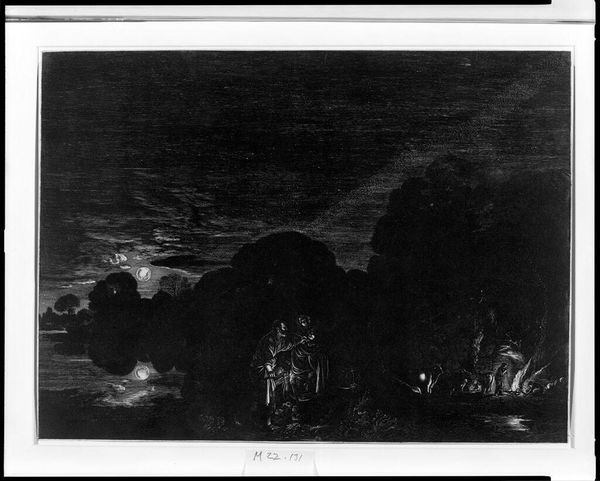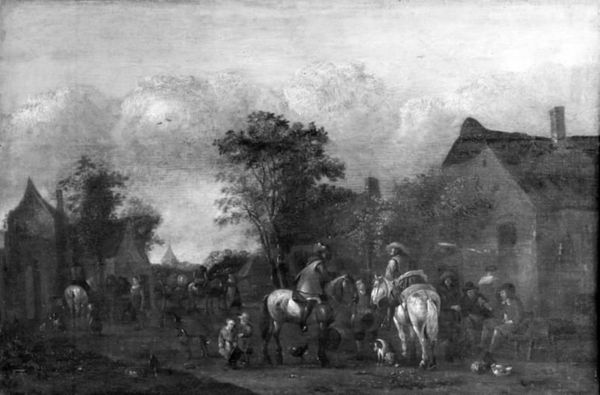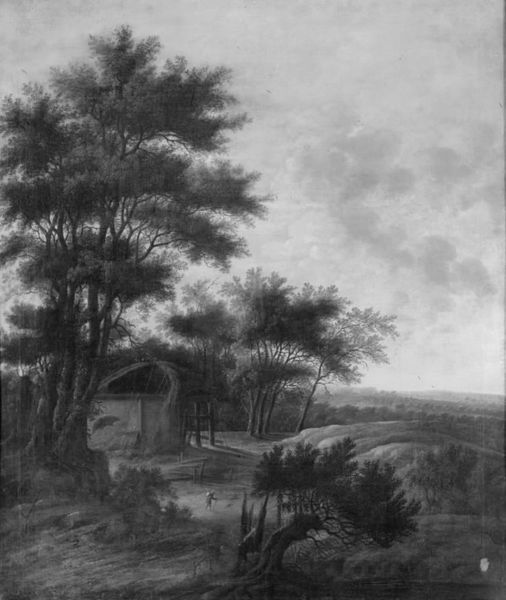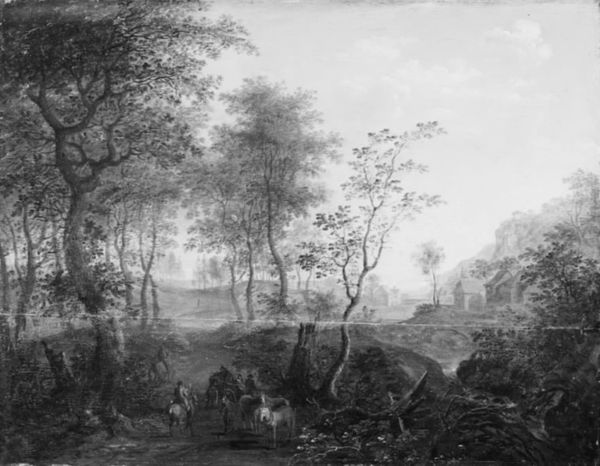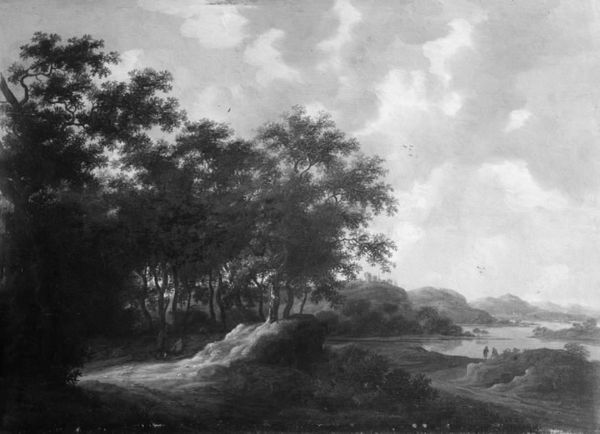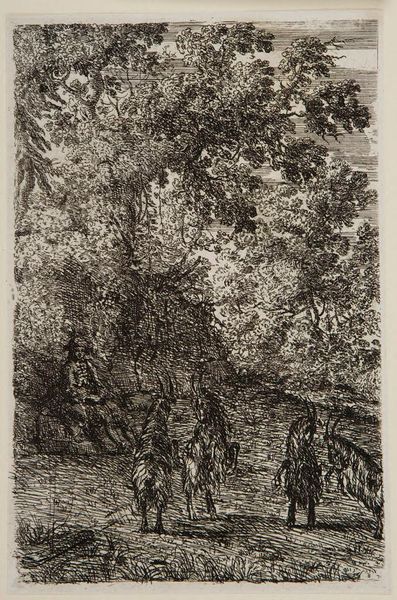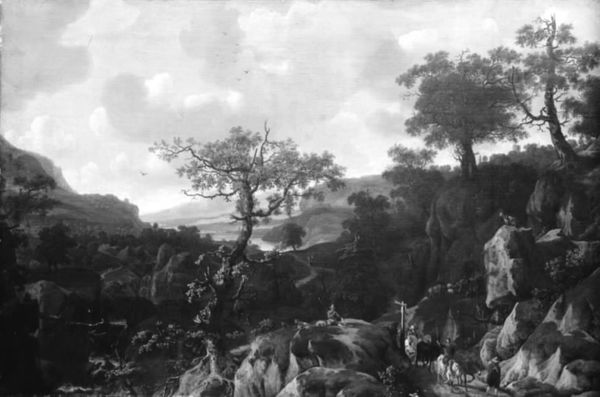
#
tree
#
solitude
#
natural shape and form
#
black and white photography
#
snowscape
#
countryside
#
rugged
#
death metal
#
gloomy
#
fog
#
shadow overcast
Dimensions: 48 1/2 x 72 in. (123.2 x 182.9 cm)
Copyright: Public Domain
Editor: This is Ralph Blakelock’s “The Pipe Dance,” thought to be painted between 1877 and 1900. The heavy application of dark oils on canvas creates this really intense, almost oppressive mood. What speaks to you most when you look at this work? Curator: It's important to consider Blakelock's unconventional methods. He wasn't afraid to experiment with layering, often applying paint and then scraping it back, repeating the process numerous times. This additive and subtractive process speaks to a struggle, almost a physical wrestling with the materials. This wasn't just about depiction; it was about the *making* itself. What impact do you think this process has on the final reading of the artwork? Editor: It makes the painting seem less idealized, maybe more raw and visceral? Like it reflects his own troubled mind? Curator: Exactly! And consider the socio-economic context. Blakelock struggled financially and mentally, often selling his paintings for very little, only to see their value soar later. So, is it a commentary on the art market, perhaps? The artist’s labour being undervalued in his own time? The materiality of the oil paint itself becomes a signifier of both creative struggle and economic hardship. Do you agree with that reading? Editor: I see what you mean. The layers become like a metaphor for his life experiences, and it's a critique of the system that didn't value his labor when it mattered most. That's something I didn't really notice before. Curator: And don't forget about his fascination with indigenous people. "The Pipe Dance" could be seen through the lens of cultural appropriation or a romanticized, yet inherently flawed, view of indigenous life. He's profiting from a depiction of them. Editor: I hadn’t considered that angle. Thanks for pointing that out. Curator: Considering art through materials, labor, and social issues certainly adds depth. Editor: I'm starting to see that there's a lot more to art than just what's on the surface!
Comments
No comments
Be the first to comment and join the conversation on the ultimate creative platform.
